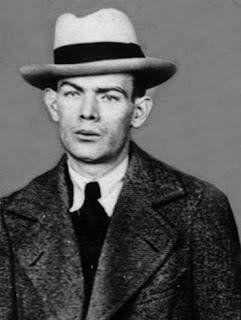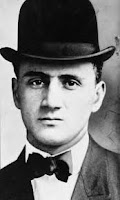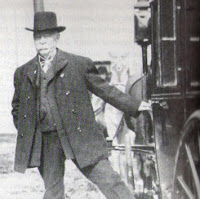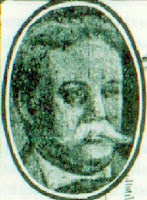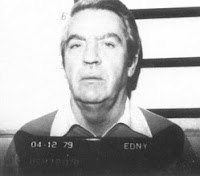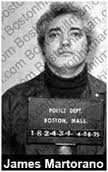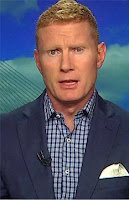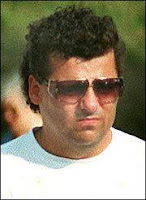| Name: |
Notes: |
| Michael "Mickey" Bowers |
Life: 1901–1966 (aged 64–65)
Years active: 1920–1966
(1901 – June, 25 1966) New York labor racketeer who, with his cousin Harold Bowers, was a major power on the New York waterfront though the ILA's notorious "Pistol Local" based in Hell's Kitchen. He was a member of the Westies. |
Elmer "Trigger" Burke
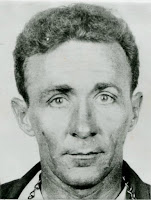 |
Life: 1918–1958 (aged 39–40)
Years active: 1941–1956
New York mobster and freelance assassin.
Trigger (1918 – January 9, 1958) also known as Machine gun Burke, the cold-blooded hit man named Elmer Francis Burke can not be considered a Boston mobster, but history tells us there is a Nexus some how. As the public records so reflect, when he was brought here for special assignment in the disposal business in 1954, he made his short stay particularly memorable.
He was arrested for the murder of Poochy Walsh, convicted and sentenced to death in the Electric Chair. On January 9, 1958, he was electrocuted at Sing Sing Prison in New York. |
Edward "The Butcher" Cummiskey
 |
Life: ???–1976 (aged ?)
Years active: 1950's–1976
Edward "Eddie The Butcher" Cummiskey (d. August 20, 1976) was a New York mobster and enforcer for mobster Mickey Spillane during the 1950's and 60's. Later served as a mentor for Jimmy Coonan and other members of the Westies.
He was shot at point blank range and killed by Joseph "Mad Dog" Sullivan while drinking at the Sunbrite bar on August 20, 1976. His death would be one of many ordered by Anthony "Fat Tony" Salerno seeking to eliminate high ranking and veteran members of Spillane's organization. |
Ronald Dermody
 |
Life: ???–1965 (aged ?)
Years active: ???–1965
Ronald P. Dermody was an Irish-American gangster from Cambridge, Massachusetts and a member of Whitey Bulger's bank robbing team. Dermody, the son of gangster Joe Dermody, at some point in the early 1960s, made the mistake of falling in love with the girlfreind of Winter Hill Gang member James "Spike" O'Toole. So Dermody, despite his ties with the gang, made a deal with Charlestown mobster, and enemy of Winter Hill Gang leader James "Buddy" McLean, George McLaughlin. The deal was, if McLaughlin would take care of O'Toole, Dermody would do the same with McLean.
Unfortunatly, for Dermody, he agreed to kill McLean first. He took a shot at McLean, but missed, and Dermody went into hiding in Cambridge. He then called crooked FBI agent H. Paul Rico for help. Rico agreed to meet Dermody at the Watertown-Belmont line, a spot Rico picked, to discuss his problem. Rico then called one-time informant Buddy McLean and told him about the meeting. Dermody showed up to the meeting, as scheduled, and was met there by Buddy McLean who shot him dead on the spot. |
Tom Devaney
 |
Life: ???–1976 (aged ?)
Years active: 1960's–1970's
Tom Devaney (died July 20, 1976) was a New York mobster and an enforcer to Mickey Spillane during the 1960's and 70's. As Spillane's chief lieutenant, Devaney played a leading role in the growing animosity between Spillane and the Genovese crime family as well as the gang war against James Coonan.
Sullivan observed Devaney for eight weeks, then disguised himself with an afro wig and skin dye, followed Devaney into a bar-and-grill in Midtown Manhattan and shot him in the head. Tommy Devaney was an exhibition worker on the West Side who was murdered by George Barone because "he was interfering with us" as George told prosecutor in court. Barone got only an assist for that slaying, which was carried out by a gunman named Joe "Mad Dog" Sullivan, who shot Devaney as he sipped a cold beer in a midtown bar after attending a wake across the street.
Devaney's death marked the beginning of the end for Spillane's operation. Spillane himself was murdered the following year. |
Daniel "Danny" Greene
 |
Life: 1933–1977 (aged 43)
Years active: 1960's–1977
Daniel John Patrick "Danny" Greene (November 14, 1933 – October 6, 1977) was an Irish American mobster and associate of Cleveland mobster John Nardi during the gang war for the city's criminal operations during the 1970s. Competing gangsters set off more than 35 bombs, most attached to cars in murder attempts, many successful. Greene had gained power first in a local chapter of the International Longshoremen's Association, where he was elected president in the early 1960s. Greene pushed into Cleveland rackets and began competing with the Sicilian Mafia for control of the city. He set up his own group called the Celtic Club, complete with enforcers.
On May 17, 1977, Greene's longtime ally John Nardi was killed by a bomb, planted by Pasquale Cisternino and Ronald Carabbia. After Nardi was murdered, a mafia boss, James Licavoli, arranged a ceasefire with Greene, hoping to kill the other man off-guard. Shortly after their meeting, Greene muscled in on a large West Side gambling operation originally run by Nardi. Greene offered Licavoli a percentage, but it was declined. On October 6, 1977, Greene went to a dental appointment at the Brainard Place office building in Lyndhurst, Ohio. Members of the Mafia had tapped his phone and were aware of the visit. After Greene visited a dentist and left the office building, he approached his car. The automobile parked next to his exploded, killing Greene instantly, the carbomb was believed to have been planted by a hitman known as Ray Ferritto. In the aftermath of Greene's murder, the FBI intercepted some conversations through its Title III hidden-microphone surveillance at Licavoli's house. Licavoli, his right-hand man John Calandra, and an unidentified male were complaining about Nardi, Frank Embrescia and Frank Brancato.
In the aftermath of Danny Greene's murder, his hitman Ray Ferritto was arrested by Cleveland police, and subsequently was targeted by Licavoli. Ferritto surrendered himself to the Federal Bureau of Investigation and struck a deal in order to gain protection. This all led to the Mafia Commission Trial, which put Mafia Families from all over the United States, especially all of New York's 5 Families - the Gambino crime family, the Genovese crime family, the Colombo crime family, the Lucchese crime family, the Bonanno crime family, on trial. This trial practically ended the existence of the Cleveland Mafia.
In 1998, Rick Porrello, a former Cleveland-area police lieutenant, wrote To Kill The Irishman: The War that Crippled the Mafia (1998), about Greene's engagement with the Mafia. He won a national Non-Fiction award for the book. It was adapted as a movie first entitled The Irishman: The Legend of Danny Greene.
In 2011, the biopic Kill the Irishman, which loosely chronicles Greene's life, was released to favorable reviews. It was directed by Jonathan Hensleigh and starred Ray Stevenson as Greene. |
Cornelius Hughes
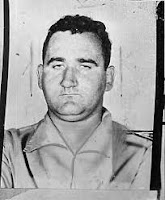 |
Life: 1930–1966 (aged 36)
Years active: 1950's–1966
Cornelius "Connie" Hughes (d. May 25, 1966) was an Irish-American mobster from Charlestown, Massachusetts and one of the most feared assassins of the 1960's, doing hits for Charlestown's "The McLaughlin Brothers" gang with his brother Stevie. He assassinated Somerville, Massachusetts Irish gang leader James "Buddy" McLean during the Boston Irish Gang Wars which left over forty men dead from both Somerville and Charlestown. He was later shot to death in his car by Somerville's "Winter Hill Gang" assassins, "Cadillac" Frank Salemme and Joseph "The Animal" Barboza, while driving in the suburban neighborhood of Revere, Massachusetts.
Connie Hughes age 36 died from a fusillade of automatic weapons fire and died at the scene on May 25, 1966. |
Stephen Hughes
|
Life: 1927–1966 (aged 39)
Years active: 1950's–1966
Boston mobster and, with his brother Corneilius Hughes, a hitman for the McLaughlin Brothers.
On September 23, 1966, Stephen Hughes and another Charlestown (“THE TOWN”) gangsters were gunned down while driving along Route 114 in Middleton, Massachusetts just outside of Boston in the mid-afternoon in board daylight. Stephen was 39 years old. |
| Donald Killeen |
Life: 1923–1972 (aged 48)
Years active: 1950s–1972
Donald Killeen (September 14, 1923 – May 13, 1972) was an Irish-American mob boss who controlled criminal activity, primarily bookmaking, in South Boston, during the 1960's and 1970's.
He was killed outside his home in suburban Framingham, Massachusetts, on May 13, 1972, as he was called away by an associate on his son Gregory's fourth birthday. He left the house saying he was going to fetch a newspaper but in reality was going to get his son's present, a toy fire engine, in the trunk of his 1971 Chevrolet Nova. As Donald went to fetch a gun stashed underneath the driver's seat of his car, a gunman pulled open the car door and jammed the machine gun in his face before squeezing off fifteen rounds. |
Owen Vincent Madden
 |
Life: 1891–1965 (aged 73)
Years active: 1900's–1940's
Owen Vincent Madden, known as Owney Madden and nicknamed "The Killer" (December 18, 1891 – April 24, 1965) was a leading underworld figure in Manhattan, most notable for his involvement in organized crime during Prohibition. He also ran the famous Cotton Club and was a leading boxing promoter in the 1930's.
Leaving behind racketeering, Madden settled in Hot Springs, Arkansas which had become known as a haven for various criminals, with a corrupt city government and police force. He also became involved in local criminal activities, especially illegal gambling. The Southern Club became a popular nightspot for mobsters; Charles Luciano was apprehended there in 1935. Madden became a naturalized U.S. citizen in 1943, and eventually married the daughter of the city postmaster. He lived in Hot Springs until his death in 1965.
Michael Walsh's And All the Saints is a fictionalized account of Madden's life, told in the first person, from his arrival in New York to his decampment for Hot Springs in 1935.
Madden was portrayed by Bob Hoskins in Francis Ford Coppola's The Cotton Club.
The character Owney Maddox, the Arkansas mob boss targeted by gunslinging DA's Investigator Earl Swagger in Stephen Hunter's novel Hot Springs, is modeled on Madden's later years.
Orville Halloran, character from Daredevil Noir (see Marvel Noir), is modeled after Madden.
Madden appears as a character in William S. Burroughs' screenplay The Last Words of Dutch Schultz.
In HBO's prohibition gangster drama Boardwalk Empire Madden is portrayed by Fredric Lehne.
Madden is a main player in the 2014 novel The Wife, The Maid and the Mistress by Ariel Lawhon which is a fictionalized account of the disappearance of Judge Joseph Crater. |
Bernard "Bernie" McLaughlin
 |
Life: ???–1961 (aged ?)
Years active: 1950's–1961
Bernard "Bernie" McLaughlin (d. October 1961) was an Irish-American gangster from Charlestown, Massachusetts, and leader of "The McLaughlin Brothers" gang.
In October 1961, Buddy McLean, Alex Rocco, and corrupt police officer Russell Nicholson found Bernie in front of the Morning Glory cafe in Charlestown and shot him dead. Despite the large crowd, not one witness agreed to violate the neighborhood code of silence and the three went free. Soon after, Russ Nicholson was taken from the street and murdered by Bernie's brothers Punchy and Georgie. |
Edward "Punchy" McLaughlin
 |
Life: 1917–1965 (aged 48)
Years active: 1950's–1965
Edward "Punchy" McLaughlin (May 16, 1917- October 20, 1965) was an Irish-American mobster and member of the Charlestown Mob, led by his brother Bernard McLaughlin.
After surviving many assassination attempts, one where he lost his right hand and another where he lost half his jaw, Punchy was on his way to John Joseph Moakley United States Courthouse for his brother George's murder trial when he was shot dead at the Spring Street Metropolitan Transit Authority Loop in West Roxbury, Massachusetts. |
James "Buddy" McLean
 |
Life: 1930–1965 (aged 35)
Years active: 1950's–1965
James Joseph "Buddy" McLean (January 26, 1930 – October 31, 1965) was an Irish-American mobster and the original boss of the Somerville, Massachusetts-based "Winter Hill Gang" during the 1960s. McLean was well known throughout the Greater Boston area as an unstoppable street fighter. He accumulated injuries including several scars on his neck and face as well as a damaged left eye. A friend of Buddy once said, "He looks like a choir boy, but fights like the devil".
Leading the Winter Hill Gang against their Charlestown rivals for more than two years, McLean was finally shot dead by Stevie Hughes as he left the 318 Club on Broadway, Winter Hill. He was succeeded by Howie Winter then, later, by James "Whitey" Bulger. |
Hughie Mulligan
 |
Life: ???–1973 (aged ?)
Years active: 1950's
Hughie Mulligan was a New York mobster and bookmaker who headed criminal activities of the "Irish Mob" in Hell's Kitchen during the 1950s. His protégés included Jimmy Burke, an associate of the Lucchese crime family, and his eventual successor Mickey Spillane. The gang that Mulligan controlled was the predecessor of the notorious "The Westies" gang.
Mulligan died of natural causes. |
Joseph Vincent "Newsboy" Moriarty
 |
Life: 1910–1979 (aged 68)
Years active: 1923–1972
Joseph Vincent Moriarty (June 1910 – February 26, 1979), also known as Newsboy Moriarty, was an Irish American mobster in Hudson County, New Jersey who controlled the numbers game.
Around 1975, while serving another prison term on betting charges, he was diagnosed with prostate cancer. In 1976, in his mid-60s, his sentence was commuted by New Jersey Governor Brendan Byrne. Moriarty died three years later, on February 26, 1979 in Christ Hospital, Jersey City. |
Russell C. Nicholson
|
Life: 1931–1964 (aged 32–33)
Years active: 1961–1964
Boston police officer and associate of the Winter Hill Gang.
Russell C. Nicholson (d. May 1964) was a member of Somerville, Massachusetts' "Winter Hill Gang" and was rumored to be the driver for James "Buddy" McLean during the assassination of Charlestown gangster Bernard McLaughlin. Nicholson was later murdered by surviving members of "The McLaughlin Brothers" Edward "Punchy" McLaughlin and George McLaughlin for his involvement in their brother's murder. |
| Carleton O'Brien |
Life: 1903–1952 (aged 48–49)
Years active: 1920's–1952
Carleton O'Brien (1903 Providence, Rhode Island – May 1952) was an organized crime figure involved in bookkeeping and policy operations in Rhode Island. Formerly listed as Public Enemy No. 1 by state officials, O'Brien was one of the last independent racketeers as the Patriarca crime family began establishing themselves in Providence. He was also an associate of bank robber Joseph "Specs" O'Keefe and was involved in the planning of the Great Brinks Robbery during the early 1950s.
On the evening of May 1952, after returning from a local roadhouse, his body was found in the backyard of his Cranston home (although other accounts claim he was gunned down during the afternoon in a street in Pawtucket) after being shot and killed by an unidentified gunman. |
Edward "Spike" O'Donnell
 |
Life: 1889–1962 (aged 72)
Years active: 1910's–1940's
Chicago mobster and leader of the Southside O'Donnells during Prohibition.
Edward J. "Spike" O'Donnell (b. Novemeber 29, 1889 – d. August 26, 1962) was the only gangster from the Capone era to retire from the rackets, make money as a coal/oil executive, pioneer the Chicago paving of streets, maintain his political clout and die of natural causes.
Spike O'Donnell was an elder statesman of the sidewalks on 79th Street at Loomis, where he held court with White Sox great Buck Weaver and other worthies. |
James "Spike" O'Toole
 |
Life: 1929–1973 (aged 43)
Years active: 1950's–1973
James "Spike" O'Toole (December 7, 1929 – December 1, 1973) was an Irish-American Charlestown Mob associate and criminal from Dorchester, Massachusetts. He was a close friend of the leader of the Winter Hill Gang of Somerville, Massachusetts, James "Buddy" McLean.
In 1973, O'Toole was released from prison after serving a sentence for acting as an accessory after the fact in the murder of Dorchester bank clerk William Sheridan following an armed robbery.
When O'Toole was leaving gangster's Edward Connors' saloon in South Boston, Martorano ran over O'Toole with his car. O'Toole later died from his injuries. Martorano testified that James "Whitey" Bulger ordered the hit on O'Toole. |
| Joseph Ryan |
Life: 1884–1963 (aged 78–79)
Years active: 1920's–1955
Joseph Ryan, "Boss Joe" - New York labor racketeer and organized crime figure.
The ILA or International Longshoremen Association began as a labour union that was legitimate within the region of the Great Lakes. Its purpose was to assist dockworkers to get their fare share from their employers. It later expanded to east cost and a council was created by 1914 for New York District. Very soon, the ILA went o to become a mob stronghold, got manipulated by few of the most dangerous Irish mobsters of those days among whom Joseph Ryan was regarded to be the most prominent.
In 1955, after being convicted and fined, he never was seen near the waterfronts. |
Michael "Mickey" Spillane
 |
Life: 1934–1977 (aged 42)
Years active: 1959–1977
Michael J. Spillane, much better known as Mickey Spillane, (July 13, 1933 – May 13, 1977) was an Irish-American mobster from Hell's Kitchen, New York City. Spillane, who was called the "last of the gentleman gangsters," was a marked contrast to the violent Westies mob members who succeeded him in Hell's Kitchen. Spillane was no relation to the author Mickey Spillane, or to the wrestler Michael Spillane.
On May 13, 1977, Spillane was killed outside his apartment in Queens. It has long been rumored that DeMeo murdered Spillane as a favor to Coonan, who subsequently took over as the boss of the Hell's Kitchen Irish Mob. Spillane is buried in Calvary Cemetery in Queens, New York.
The Spillane family owns a bar in Hell's Kitchen called "Mickey Spillane's Hells Kitchen" on 49th Street and 9th Avenue. |
Roger Touhy
 |
Life: 1898–1959 (aged 61)
Years active: 1920–1933
Roger Touhy (September 18, 1898 – December 16, 1959) was an Irish-American mob boss and prohibition-era bootlegger from Chicago, Illinois. He is best remembered for having been framed for the 1933 faked kidnapping of gangster John "Jake the Barber" Factor, a brother of cosmetics manufacturer Max Factor, Sr. Despite numerous appeals and at least one court ruling freeing him, Touhy spent 26 years in prison. Touhy was released in November 1959. He was murdered by the Chicago Outfit less than a month later.
Roger Touhy's killers were never identified. One historian has suggested that Murray "The Camel" Humphreys was behind the assassination, having never forgiven Touhy for humiliating him in 1931 or for comments made about him in Touhy's recently released autobiography.
Others believe the killers to have been Sam "Momo" Giancana, Marshall Caifano or Samuel "Teets" Bataglia, all former members of the 42 Gang which had fought Touhy on the back roads of northwestern Cook County in 1931-1933. |


